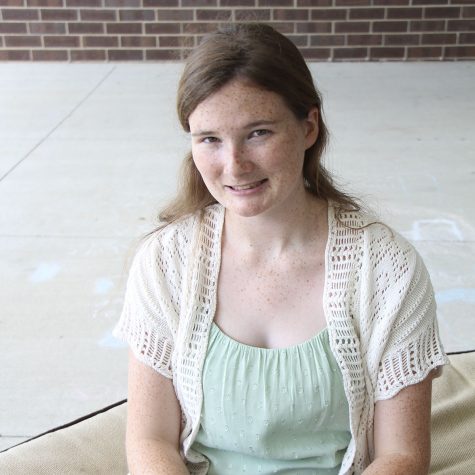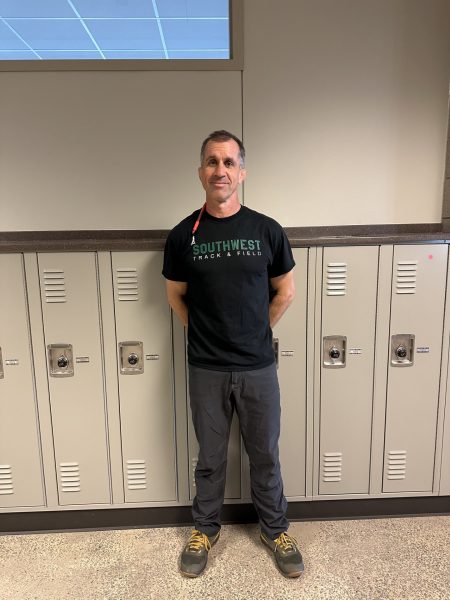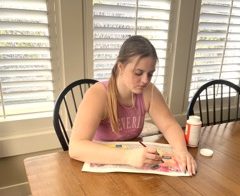Students speak foreign languages at home

Most students at Southwest have taken Spanish or French, and a few even Latin. But not many have learned languages like Tamil, Mandarin or Nepali.
The school has a population of students from other cultures who speak different languages at home with their families.
Counseling Department Chair Kevin Halfmann estimates that around ten percent of students attending Southwest are able to converse in a different language.
Freshman Amira Bajracharya speaks Nepali as well as English. Her family is from Nepal, and her parents moved to the United States in the late ‘90s.
Bajracharya enjoys speaking different languages because she can say things other people can’t. Halfmann said that by learning different languages, you may be able to think of new ideas.
“Being able to look at things in a different light, a different way, you can better understand things,” Halfmann said.
Some languages have certain words that cannot be expressed in others.
“Sometimes I can’t think of the English word, so I say it in Nepali,” Bajracharya said. “And sometimes when I’m speaking in Nepali I say a word in English.”
But speaking her native language is valuable to Bajracharya. She says that her younger siblings all either know or are learning to speak Nepali. Her family wants to feel connected to their heritage.
To keep their culture alive, her family visits Nepal every few years. They also celebrate holidays and festivals and try to keep with the traditions as best they can.
When people ask about her culture, Bajracharya tries to answer all of their questions and tell them as much as she can.
“We can’t be xenophobic,” Halfmann said, “In other words, [we need] to be accepting of people different from us. As part of the United States, there are people from all over.”
An increasing number of people speak other languages at home beside English.
“I learned Nepali first, but my parents taught me English, so I didn’t have to take ESL classes,” Bajracharya said.
Freshman Eunice Lee took ESL (English as a second language) classes because she was not as fluent in English as Bajracharya.
“In kindergarten I knew a little bit of English, enough to communicate with other kids, but I wasn’t very good,” Lee said. “I had to go to an after-school thing called ESL.”
The course, now called ELL (English Language Learners), assists students learning to speak fluent English. They go to their usual class and are helped throughout the day with reading, writing, listening to and speaking English as well as cultural adjustments. Eight elementary, four middle and three high schools offer this program.
To qualify for the ESL/ELL program, students must go through a screening process that tests English listening, speaking, reading and writing. They must score “proficient” in all four areas before they exit the program. They are then monitored for two years.
Lee speaks Mandarin as well as English. Her parents are from Taiwan and Malaysia, and they came to the United States for college. Lee spoke mostly Mandarin when she was growing up.
“My little brothers don’t speak it as well,” Lee said. “They have grown up speaking English.”
Lee says she likes being able to speak another language because it enables her to speak with her grandparents.
Freshman Renita Wilson’s parents grew up in India but moved when her father was hired by a United States company. Her parents spoke Tamil, but had learned some English as part of their education. Growing up in the Wilson household, her family spoke both languages.
“In kindergarten it took a few months to switch languages,” Renita said, “It was really funny because the teacher didn’t know what I was saying, and I didn’t realize I was speaking a different language.”
Renita said school isn’t a big deal as she has gotten older and has adjusted. Her favorite thing about speaking another language is experiencing other cultures, while her 8-year-old brother Jedrick Wilson’s favorite part was the food.
After thinking a while, Jedrick could only come up with one thing he didn’t like:
“The language has 216 letters so I have to make sure I pronounce everything right,” Jedrick said.
However, the Wilsons still try to keep a balance between the two languages at home.
“English is definitely important because they are living here and studying here,” Renita’s dad Joseph Wilson said. “Tamil is also important because we want to keep relations with my family.”
The Wilson family visits India around every three years to see relatives, and they still call their family often.
“The world is changing,” Joseph Wilson said. “Even though we are living on different parts of the earth, we can experience other cultures.”

Murukku
4 cups rice flour
1 cup urad dal
4 tablespoons butter
1 tablespoon cumin seeds
salt to taste
oil for frying
warm water
Dry roast the urad dal flour and mix with rice flour, salt and cumin seeds. Add melted butter, mix well and make a smooth dough by adding small amounts of warm water.
Press down the dough through the murukku press on a wet paper towel. Deep fry three or four clusters of dough together in hot oil.
Serve and enjoy.

Lillie Hoffart is a senior and has been on staff since her freshman year. She enjoys writing and designing for the paper and is the managing editor....












